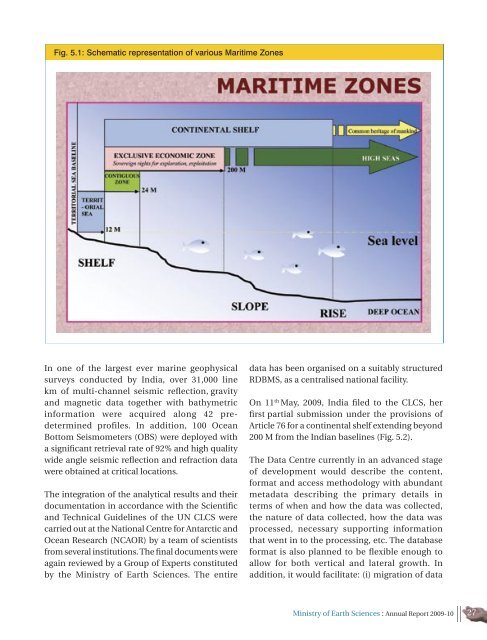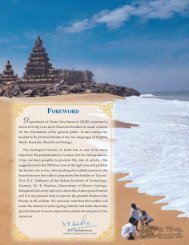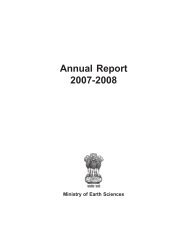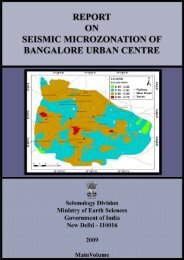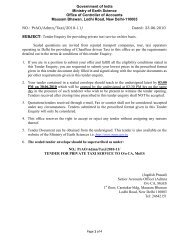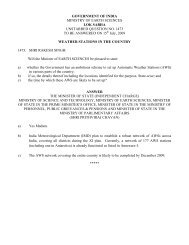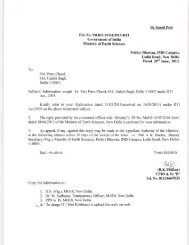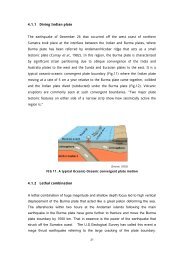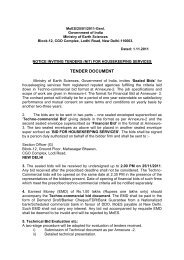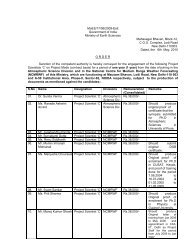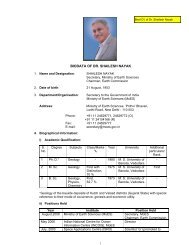Annual Report 2009-2010 - Ministry Of Earth Sciences
Annual Report 2009-2010 - Ministry Of Earth Sciences
Annual Report 2009-2010 - Ministry Of Earth Sciences
You also want an ePaper? Increase the reach of your titles
YUMPU automatically turns print PDFs into web optimized ePapers that Google loves.
Fig. 5.1: Schematic representation of various Maritime Zones<br />
In one of the largest ever marine geophysical<br />
surveys conducted by India, over 31,000 line<br />
km of multi-channel seismic reflection, gravity<br />
and magnetic data together with bathymetric<br />
information were acquired along 42 predetermined<br />
profiles. In addition, 100 Ocean<br />
Bottom Seismometers (OBS) were deployed with<br />
a significant retrieval rate of 92% and high quality<br />
wide angle seismic reflection and refraction data<br />
were obtained at critical locations.<br />
The integration of the analytical results and their<br />
documentation in accordance with the Scientific<br />
and Technical Guidelines of the UN CLCS were<br />
carried out at the National Centre for Antarctic and<br />
Ocean Research (NCAOR) by a team of scientists<br />
from several institutions. The final documents were<br />
again reviewed by a Group of Experts constituted<br />
by the <strong>Ministry</strong> of <strong>Earth</strong> <strong>Sciences</strong>. The entire<br />
data has been organised on a suitably structured<br />
RDBMS, as a centralised national facility.<br />
On 11 th May, <strong>2009</strong>, India filed to the CLCS, her<br />
first partial submission under the provisions of<br />
Article 76 for a continental shelf extending beyond<br />
200 M from the Indian baselines (Fig. 5.2).<br />
The Data Centre currently in an advanced stage<br />
of development would describe the content,<br />
format and access methodology with abundant<br />
metadata describing the primary details in<br />
terms of when and how the data was collected,<br />
the nature of data collected, how the data was<br />
processed, necessary supporting information<br />
that went in to the processing, etc. The database<br />
format is also planned to be flexible enough to<br />
allow for both vertical and lateral growth. In<br />
addition, it would facilitate: (i) migration of data<br />
<strong>Ministry</strong> of <strong>Earth</strong> <strong>Sciences</strong> : <strong>Annual</strong> <strong>Report</strong> <strong>2009</strong>-10 27


